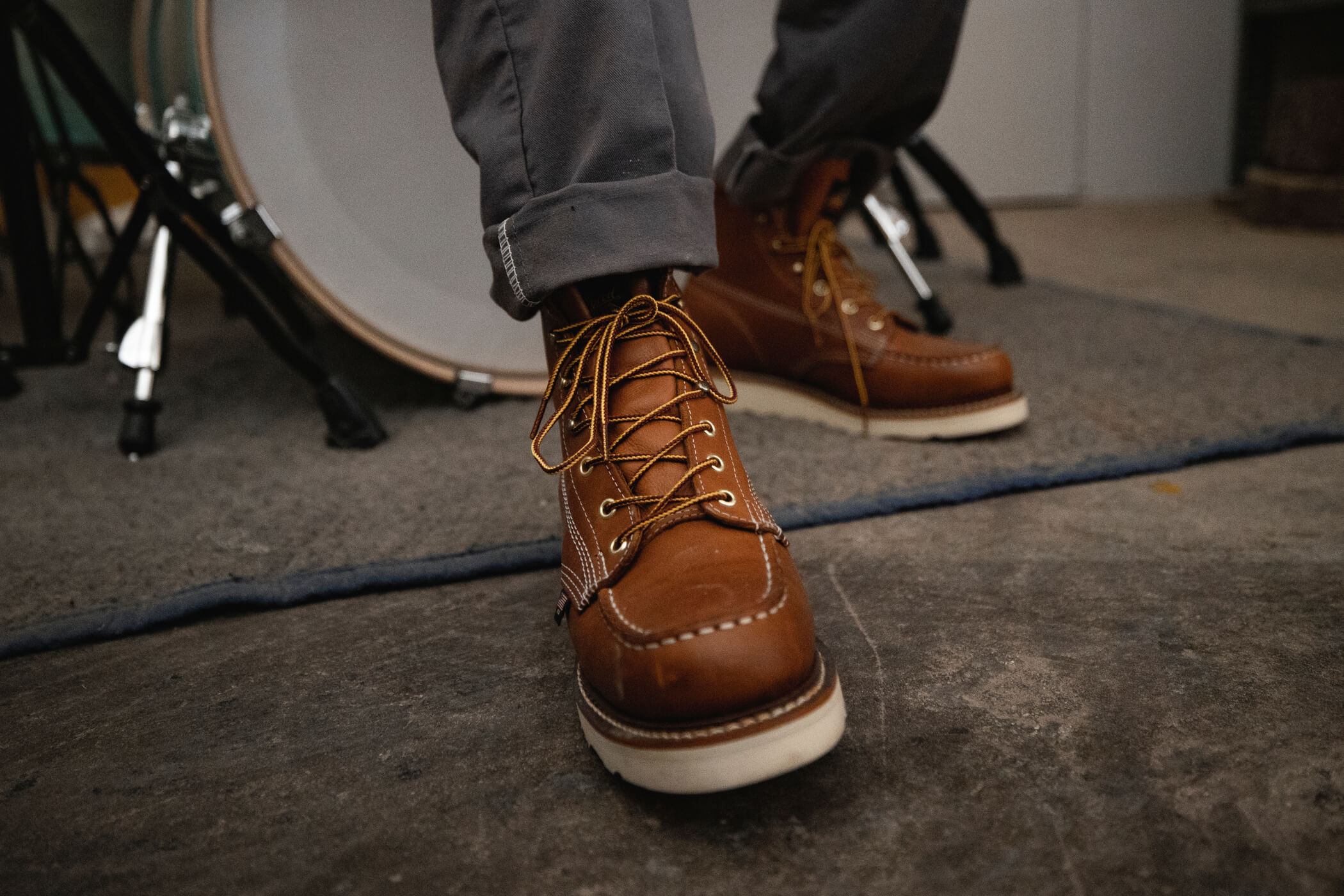We'll cover how a new pair of work boots should fit, a bit about the break-in process, and some tips for stretching leather boots at home if you're still searching for that perfect fit.

Sizing Your New Boots
While there are ways to stretch leather boots at home, we recommend taking the time to choose a style and size that work for your feet so you can wear them comfortably for years to come. Getting it right the first time not only prevents discomfort and possible injury, but also ensures the longevity of your boots, especially if you plan to maintain your investment through restoration or repairs in the future.
New work boots should fit snugly, but not too tight, especially around the ball of your foot. Leather boots do stretch out a bit when you break them in, but the fibers will only lengthen so much. Here are some tips for getting the right fit:
- Try on various styles (like moc toe, round toe, and square toe designs) and multiple sizes to see what feels best. This may be easier to do when shopping in person.
- Walk around in each pair and notice any areas that may become a problem, like the steel toe of your boots rubbing on your big toe or your heel sliding when you step.
- Check the store's return policy before purchasing, especially if you're shopping online, to see if you'll be able to exchange your boots for a different style or size if needed.
- Read reviews from real people that wear the work boots you're checking out, this can be especially helpful if they share about the design's functionality on the job.
- If your feet aren't exactly the same size (like 90% of people), size to the larger foot.
For more information about getting the right fit, check out our boot sizing guide.
Breaking in Work Boots
It takes about 40 hours of wear to break in a pair of work boots, and leather boots do stretch slightly over time. We recommend wearing your new boots for a few hours each day to allow them to mold to the shape of your feet. Walking around the house, taking trips to the hardware store, or going out for meals in your new boots should do the trick without giving you blisters. Breaking in your boots gradually before you wear them to work will save you a lot of pain on the job site.
Some types of leather tend to break in more easily than others. We've heard from Thorogood wearers that our Briar Pitstop full-grain leather (available in styles from both our 1957 and American Heritage series). breaks in like a dream, while remaining very durable over time. The Midnight Series is another popular choice for comfort. This information may also be available in the product reviews.
How to Stretch Work Boots
If you've broken in your boots but they're still a bit too tight, there are a few ways to stretch them at home. Keep in mind that there's only so much you can do without compromising the integrity of the leather, so take it slow and steady!
How to Stretch Leather Boots Wider
Boot stretchers are a good option to add width to the toe box, but if you don't want to spend money on the tool, you can also try our DIY version. Fill a water-tight plastic bag with water, press it into the toe area of your boots, and put the whole thing in the freezer overnight. As the water freezes, it expands and stretches the leather.
You can also apply leather conditioner or specialized shoe stretching spray and wear them around the house with thick socks on to add a bit more space inside your boots. The conditioner helps soften the fibers and allows them to stretch more easily. Be careful with this method though, because soaking your boots can compromise the material and lead to damage.
Keep in mind that steel and composite safety toes will not stretch the same way a leather toe will, so it's even more important to size these correctly and be sure you have plenty of toe room to avoid discomfort down the road.
How to Shrink Leather Boots
If you've accidentally sized up too far, there are also some DIY methods for shrinking boots, like dunking your boots in water and letting them dry on your feet. It's true that leather shrinks as it dries out, but wet boots are susceptible to bacterial and fungal growth, so we don't recommend this method.
